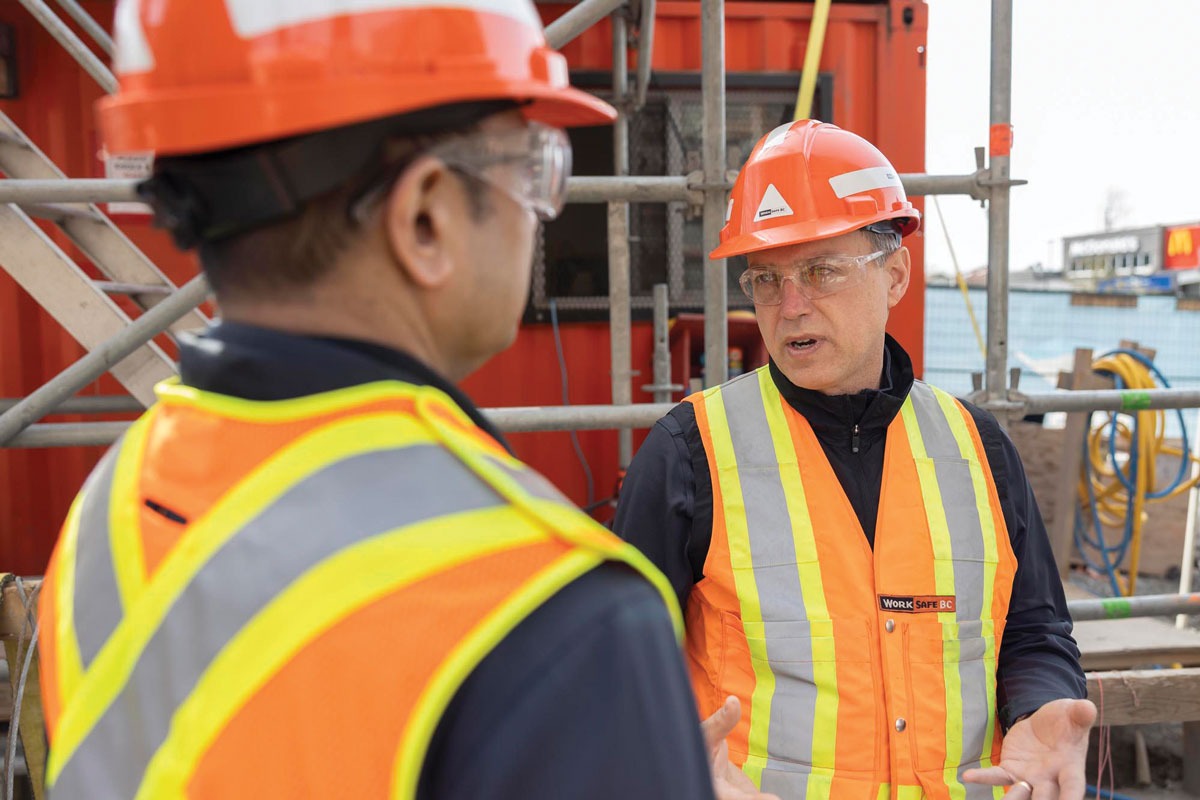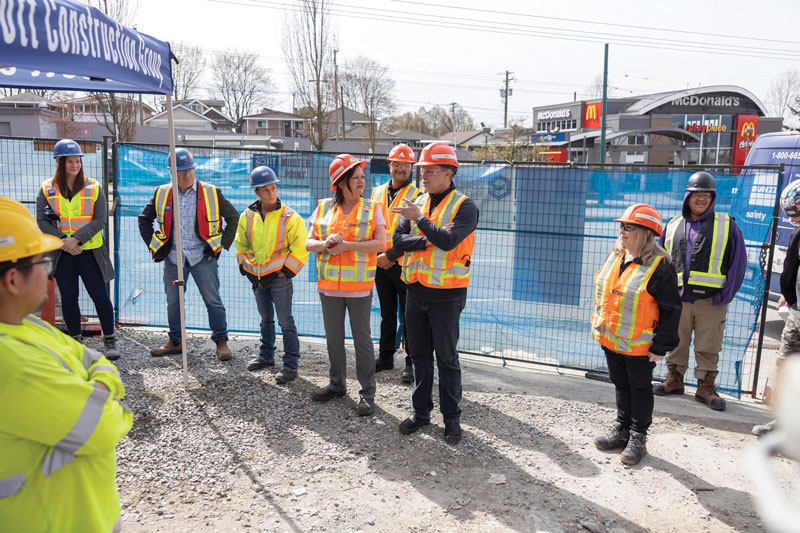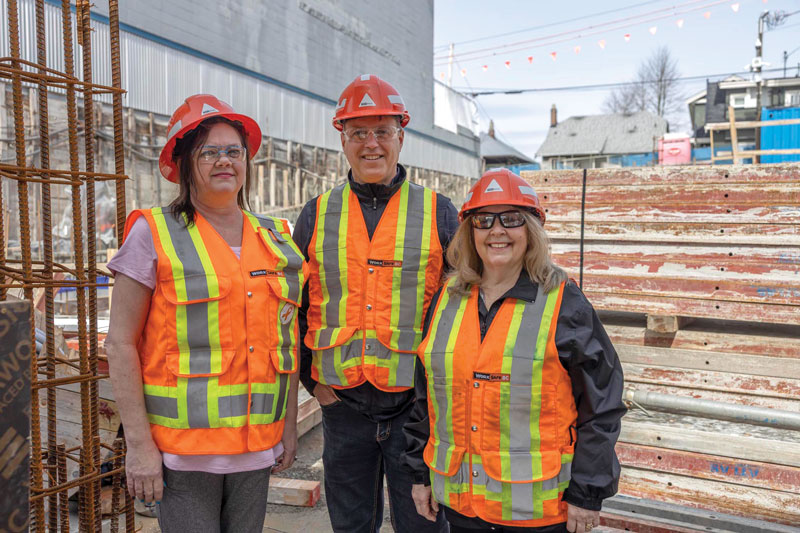
The B.C. Builders Code, created in 2019 by the BC Construction Association (BCCA) and its partners, is a powerful tool helping the construction industry grow and prosper into the future.
The industry is facing an ominous deficit of construction workers in the coming years. Yet BuildForce Canada reports that of the one million tradespeople employed in the construction industry in 2021, only five per cent of the on-site construction workforce were women. It isn’t much better for Indigenous people and new Canadians.
Looking for solutions, BCCA applied to the provincial government to fund development of a project to improve retention of tradeswomen in the industry. In 2018, they received funding and expertise from the provincial and federal governments, stakeholders in the industry as well as project owner LNG Canada.
Building the Code
Lisa Stevens, chief strategy officer at BCCA took the lead on the project. “In the course of speaking to hundreds of tradeswomen, we heard clearly that they did not want us to create a program that would further shine a spotlight on them; make it appear there was any preferential treatment. They just want to be able to do their work like everyone else.
“We were well aware of the lack of diversity in construction and overall skilled workforce shortage, along with high turnover of all workers in the first year. We soon realized the need to provide an effective tool for employers looking to attract and retain not just tradeswomen, but to build an overall diverse and inclusive workforce.”
This led to the idea of a Code of Conduct for everyone on a worksite. “The approach we took was that we know safety is extremely important in the construction industry,” Stevens said. “We needed to work on cultural understanding and acceptance of the idea that if you allow negative behaviours on your worksite, you don’t have a safe worksite.

“This concept that safety is about psychological hazards, as well as physical, has generally been accepted in the industry, and a lot of employers and crews are there already. But what the Builders Code does is give them the language and ability to profile this priority in a way everybody understands. We’re used to working with building to code in our industry, so the idea that we have a code for behaviour fits the vernacular.”
One of the biggest issues in developing an inclusive culture is for individuals to become aware of their own behaviour, to realize that something they might be doing or saying is harmful to other people.
“A big part of adopting the Builders Code is about unlearning,” Stevens said. “Maybe I offer to carry something for someone because it’s heavy, but they don’t need me to make that offer. I feel like I’m being kind, but maybe it’s demeaning to that person. There’s so much behaviour that we do, and don’t understand how it might affect others.”
An acceptable worksite
The Builders Code sets a standard code of conduct through defining an “Acceptable Worksite” for reducing risk and ensuring a safe and productive environment for all workers. At www.builderscode.ca/signthepledge/ employers can download and sign a personalized pledge indicating their commitment to build a workforce where all employees are able to perform at their best and reach their full potential.
“We encourage employers to sign the pledge,” Stevens said. “It isn’t mandatory, but if they do, we’ll promote their company on our website. This is a powerful way to show potential employees and clients they support the Builders Code Acceptable Worksite standards. We’re finding that tradespeople seeking work are looking for a Builders Code company where they’ll be treated with respect and given opportunities.

“We have different-sized companies on board, but recently, Teck Resources, Ltd., a very large mining company signed the Builders Code [Acceptable Worksite] Pledge. BC Hydro also signed and went further by having all their main contractors on their Site C Project sign the pledge.”
Benefits of adopting the Builders Code
“The construction industry is one of many industries that suffer from the impacts of mental health issues,” said Jaret Swanson, manager of Consultation & Education Services for Construction at WorkSafeBC. “We see that taking the Builders Code [Acceptable Worksite] Pledge and committing to building a more inclusive ‘construction community,’ will result in a psychologically safer and more accepting work environment with all the value-added benefits that brings.”
Chelle Wright, an occupational safety officer on WorkSafeBC’s construction team, has worked in construction for more than 20 years and recalls that when she started, positions for women were very limited. “As time passed, the idea that women do not belong in construction began to change, and I was able to expand my knowledge and experience within a world that had previously been very gender-biased,” Wright said.
“We needed to work on cultural understanding and acceptance of the idea that if you allow negative behaviours on your worksite, you don’t have a safe worksite.”
Lisa Stevens, BC Construction Association
Wright credits the Builders Code, BCCA, WorkSafeBC and other partners with assisting in these changes and raising awareness of the need for them to continue. “The best ideas don’t come from an individual, but from the collaboration of many. Promoting psychological health and safety in the workplace allows all workers to have a fulfilling and safe work environment regardless of gender, ethnic background or sexual identity,” she said.
It isn’t only workers who benefit from changing perceptions and actions. According to a 2018 article, “Delivering through Diversity,” by McKinsey & Company, “Companies have increasingly begun to regard inclusion and diversity as a source of competitive advantage and specifically as a key enabler of growth.” In “The Value of Diversity and Inclusion in the Canadian Construction Industry,” the Canadian Construction Association (CCA) concludes that this advantage touches on many dimensions: productivity, revenue, market share, employee retention, innovation and more – resulting in an improved bottom line.
Acceptable worksite policies
The Builders Code team has developed two Worksite Policy models: one from smaller employers and those new to workplace culture, and another for larger employers or those interested in more developed policies. The policies are written in plain language and can be changed in any way that works best for each company. These policies are free and have already been downloaded thousands of times.
Further resources
Through BCCA, the Builders Code offers several two-hour training sessions and one full-day session covering topics of direct interest to construction employers looking to develop and strengthen their commitment to achieve acceptable worksites and increased employee retention. Stevens says there is a fee for the training sessions, but the Crew Training app is free to download and covers the basics of unacceptable worksite behaviour.
“Workers onsite can download our app onto a phone, watch a quick ‘Cool or Tool’ real-life scenario each day and answer a couple of questions about the video. We use animated tools in the videos instead of people and the use of humour makes it easier to talk about things,” said Stevens.
Builders Code Employers Advisors can help with the adoption of the Builders Code or navigating human resource situations on the worksite related to hazing, harassment and bullying with the goal to retain the tradesperson.
What’s next?
After coming off the pilot project just over a year ago, the Builders Code is self-sustaining and growing, managed fully by BCCA and is in the process of hiring a full-time provincial manager.
“Both the Northwest Territories and Nunavut recently signed on, and we hope we can continue to grow and get more official B.C. licensees in other jurisdictions,” said Stevens. “There’s still a lot of work to be done, but we have received a very positive reception across the industry. When we went back to those companies that had been early signatories to see how the pilot worked, across the board, the experience in the crews has been very positive. Everybody gets it and are willing to make the changes. We’re just helping them along.”